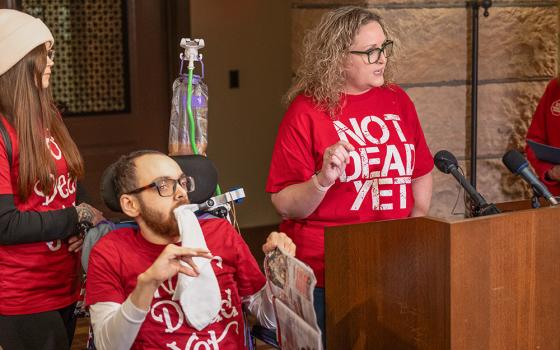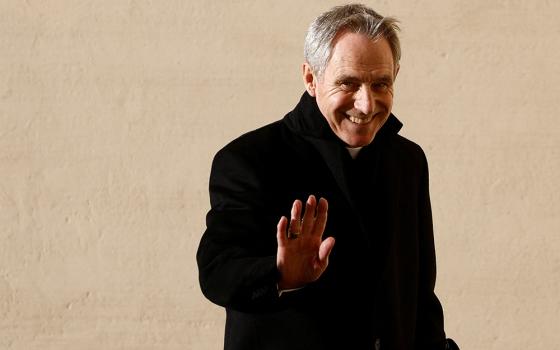
Mumbai
Affectionately called Gai, Society of the Sacred Heart of Jesus Sister Eileen Gaitonde is now all of 70, but still a dynamo, working virtually non-stop for the mentally challenged who are studying at the S.P. J. Sadhana School here. I interviewed Gaitonde recently, asking her what led to her vocation, and what it has been like to be working with the mentally challenged. The following is a slightly edited version of her story.
I grew up in a large Catholic family. We were 11 children, six girls and five boys. Of the sisters, Barbara and I became nuns. Though our upbringing was Catholic, we also learned from our father a respect for all religions through what he told us about the Bhagvad Gita and the scriptures of other religions.
My father, Aloysius Soares was a teacher of classical languages and a principal of Antonio D’Souza school in Byculla, Mumbai. My mother was a home maker. From her we acquired a love for social service and service in the church.
I was 23 years old when I joined the Society of the Sacred Heart. I got my vocation on a dance floor where I was a belle of the ball. At that time I realized that this kind of life was not for me. The conviction grew that I was being called to the religious life. That conviction has not wavered despite many ups and downs.
The society I joined was an educational order, at all levels -- rural, urban, including lower schools and colleges. When I joined the order it was semi-cloistered. After Vatican II this changed, though the order remained a deeply contemplative one. I first joined in 1963, was first professed in 1973, and became provincial in '79-'80 for an 8 year term. 
When I ended my work as provincial I joined the S.P.J. Sadhana School (Sadhana means a way to God), a school for the mentally challenged, which had been successfully run by Mrs. Krishnaswamy as principal for many years. Mrs. Krishnaswamy had to move to Bangalore and somehow when she left there was a vacuum and the school became a turf for ego clashes and was on a decline. Seeing the school in crisis, I joined it as principal in 1990. At the same time I was provincial treasurer, traveling to Pune for weekends and working at Sadhana School during the week.
Every three years I have had to update and reeducate myself since I had been registered as a special educator with the Rehabilitation Council of India (RCI). I did a correspondence course in special education with Manchester University and an M.Ed with the RCI.
As provincial, I used to visit Sadhana School for the health of my soul. Whenever I went abroad I would visit special schools. The happiest thing that could have happened to me was to become attached to Sadhana School. One learns soon enough that mentally challenged children make one’s life transparent, a life of truth and trust. With them there is no camouflage.
In our school we accepted violent children, those rejected by other schools. One has to put one’s life on the line. But what a sense of deep satisfaction and spiritual fulfillment one gets when a drooling, sometimes violent, vegetable of a boy turns into a Van Gogh-like painter. Our children become productive citizens of society.
I now understand how Jean Vanier was able to turn the vulnerabilities and weaknesses of such children into strengths of the soul. In time they become productive and are able to get jobs. Once this happens even parents who have written them off begin to accept them. Parents are brought on school's board. Case conferences are held for extended families. The children learn self-respect and are no longer a burden to society. This keeps them off the streets where they become fodder for terrorists and other violent groups in society.
In Sadhana School we take violent, hyperactive and difficult children. We constantly innovate, create new therapies, and bridges of communication for them. In our school 85 per cent of the children are speech impaired. Our staff is trained in the Picture Exchange Communication Program, but our pictures are Indianised, making them culturally relevant. With this form of communication the frustration level of students comes down. We celebrate every little change in each child.
This challenge is not for the weak, but for the strong. At the deeper, spiritual level, we come away energized.
We also have regular teacher empowerment programs. Teachers have to work in teams and keep growing spiritually and professionally. Otherwise they cannot survive. Mentoring is a continuous process.
I have been lucky to have with me on the staff as Vice-Principal Ms. Radhike Khanna, a person with tremendous commitment to the cause. She has a very creative mind and will not accept anything slipshod or half measures. She is like a large Banyan tree under which a lot of other Banyan trees have been able to grow. Whatever she learns, she translates for the students and the extended Sadhana family.
For me, work with the mentally challenged has been a call within a call. What we have to give to the child is a quality education and upbringing. I have always maintained that we should give not just any education, but quality education to the poor. Before I leave this planet I will hopefully have ingrained this attitude to the mentally challenged in society.
Our work is now extending to schools all over India, as far afield as Punjab in the north and Gujarat in the west where our model of education is being replicated as the only unique one of its kind in the world. Our outreach is now to African countries like Nigeria, where the mentally challenged children were once abandoned in the garbage. We also have built capacities in Tanzania and Kenya and now Namibia. Sadhana has a global vision.
We have participated in conferences in Canada, Hong Kong, Spain and Namibia. We have also exhibited the products made by our children in other countries.
What joy it brings to me when one of my little five-year students says to me: “I love Gai and Gai loves me. Bas! (that’s enough). The little one has probably seen the face of Jesus in his mentor.
[Gomes is an occasional contributor to NCR, living in Mumbai.]



